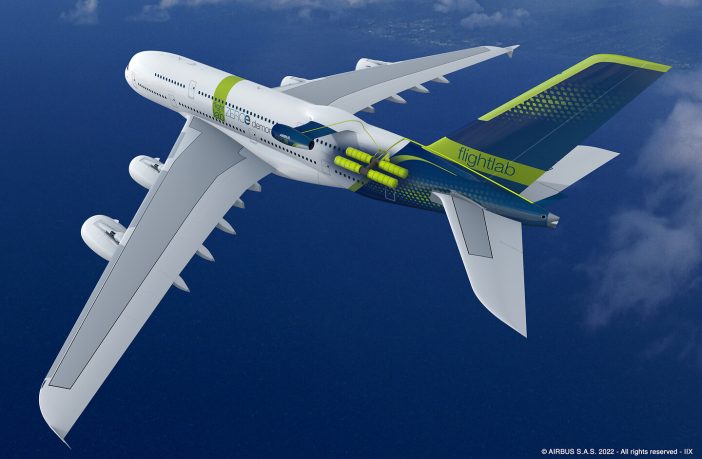- Airbus is on a mission to bring zero-emissions aircraft to market by 2035, but it needs to be stored at an exceptionally chilly -253°C.
- To use this technology means developing innovative cryogenic hydrogen storage tanks.
In its simplest terms, there are two main technologies that enable an aircraft to fly directly with hydrogen. You can power an engine with hydrogen combustion through modified gas turbine engines, and you can use hydrogen fuel cells to create electrical power. And you can deploy a hybrid approach that uses a mixture of both technologies.
But regardless of these options there is a constant at work: hydrogen has to be kept very cold. It needs to be stored at -253°C, and kept at that temperature consistently throughout the whole flight, even when the tanks are depleted.
Storage tanks for a hydrogen-powered aircraft are therefore an absolutely essential component, but they are completely different to those you might find on a traditional aircraft. Airbus recognised that getting these tanks right would be vital to the success of our ZEROe aircraft, so about 15 months ago they established Zero Emission Development Centres (ZEDCs) in Nantes, France, and Bremen, Germany, with the task of designing and manufacturing the hydrogen tanks, and set to work.
Leveraging the expertise at the ZEDCs
Bremen is close to Ariane Group and Airbus Defence and Space, with their experience working with hydrogen, and Nantes has considerable expertise with metallic structures. The tank is manufactured in Nantes, and the coldbox, which takes care of the gasification of the liquid hydrogen, is produced in Bremen.
This tank isn’t just innovative technically – it represents a departure from traditional processes. Embracing a dynamic and agile working methodology, the teams adopted a co-development approach where in order to progress quickly they accepted the need to innovate, test, fail fast, and adapt. In short, the teams get straight into manufacturing a prototype, which they test and learn from before developing an improved prototype, rather than spending a lot of time working on theoretical plans.
This speed is highlighted by the progress made at the site in Nantes, where the team took an empty warehouse and built the first cryogenic hydrogen tank ever produced at Airbus in a little over a year.
The journey to bringing this new technology to market goes something like this:
Engineers design the cryogenic hydrogen tanks on software in Toulouse. These designs are passed onto the teams in Nantes and Bremen, who review them and explore the process for manufacture. Once the design is agreed, the first tank – which is tested with nitrogen, not hydrogen – is developed. This is where Airbus is now.
The next step is to look at the prototype with a critical eye and ask what we can do better. The insights and testing data is collated and all of this information goes into the design for a second prototype, to be filled with hydrogen. Airbus already has plenty of feedback and they are looking in particular at maximising space, improving performance, and simplifying the manufacturing process. Work on the second tank is already underway and will take around another year to build and test.
The final objective is to have a tank ready to install in the A380 demonstrator by 2026-2028.
Chris Redfern, Head of Manufacturing, ZEROe Aircraft and Head of Propulsion Industrial Architect, commented: “It’s a real testament to the teamwork across our sites to see this first tank being manufactured so quickly. The agile methodology has delivered a great prototype and will help drive improvements in future iterations. We want to optimise the tank for greater efficiency and to further reduce its environmental footprint: after all, a zero-emission aircraft needs to be as close to zero emission as possible throughout its whole life cycle.”
Author: Bryan Groenendaal















